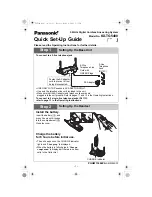
−
47
−
9. TABLE OF TROUBLES AND CORRECTIVE MEASURES
(1) With reagard to sewing
Thread breakage
Thread is worn out.
Needle thread trails 2 to 3
cm from the wrong side of
the fabric.
Thread is partially caught
by hook when thinner
thread is used.
Thread breaks in idle
stitching.
Thread path, needle
point, hook blade point or
i n n e r h o o k r e s t i n g
groove on the throat
plate has sharp edges or
burrs.
Needle thread tension is
too high.
Needle comes in contact
with the blade point of
hook.
Clearance of inner hook
guide is too large.
Needle thread tension is
too low.
Thread take-up spring
works excessively or the
stroke of the spring is too
small.
Feed timing is not proper.
T i m i n g b e t w e e n t h e
needle and the hook is
excessively advanced or
retarded.
Thread melts due to
needle heat.
Clearance between the
needle and the blade
point of hook is too large.
Thread is pushed and cut
by the presser foot and
the corner of throat plate.
Check the sharp edge or
burr on the respective
parts.
Check the clearance.
Check the clearance.
Check the specified
dimension.
Check the clearance.
Remove the sharp edges or burrs
on the blade point of hook using
a fine emery paper. Buff up the
groove section on the throat plate.
Adjust the needle thread tension.
Refer to “(5) Needle-to-hook
timing”
Decrease the clearance. Refer to
“(7) Adjusting the inner hook
guide”.
Adjust the needle thread tension.
(This trouble occurs a lot when
using synthetic threads.
Decrease the tension of of the
t h r e a d t a k e - u p s p r i n g a n d
increase the stroke of the spring.
Refer to “(9) Feed cam timing”.
Refer to “(5) Needle-to-hook
timing”.
Decrease the sewing speed.
Use silicone oil.
Refer to “(5) Needle-to-hook
timing”.
Replace needle guide with one
with felt.
Turn the thread once around the
needle.
Make a presser foot by special
order.
Troubles
Causes
Checking
Corrective measures
1
Содержание LS-1340
Страница 53: ... 53 ...
Страница 54: ... 54 ...














































